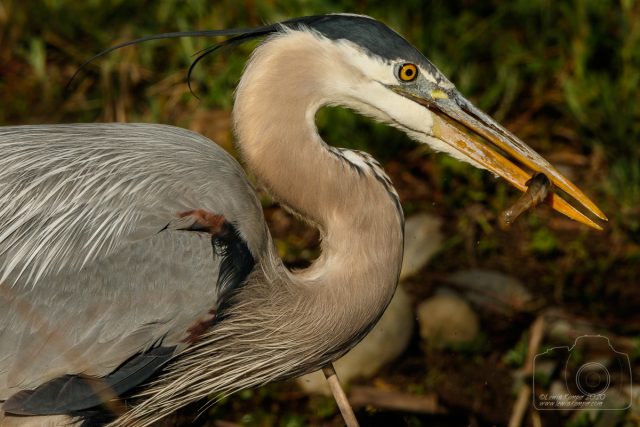Discover the Flyway from Home – Resources for Teachers, Parents & Students
The Great Blue Heron
The Great Blue Heron is a resident species in the Yolo Bypass Wildlife Area (YBWA). That means it is present during every season, all year long. It has a grey-blue back and a black stripe on each side of its head. It is the largest heron in North America. Adaptations include long legs, neck, and bill. Can you describe two ways the Great Blue Heron uses these adaptations to hunt? Can you name two different types of wildlife habitat, both found in the YBWA, where it forages for food? Use this link to help you answer those questions and learn more about this majestic bird.
https://www.allaboutbirds.org/guide/Great_Blue_Heron/id

Just for fun: The YBF education staff often introduce the Great Blue Heron to school groups as the “4, 5, 6 bird”. Each number refers to a different feature of the bird’s size. Although individual birds vary, do your best to match each number to the following physical characteristics of the Great Blue Heron. Estimate using the information provided in the link above.
Length/Height
Wingspan
Weight
Photo credit: Lewis Kemper
Answers:
Two ways the Great Blue Heron hunts:
1. Wades slowly
2. Stands statue-like
The Great Blue Heron forages for food in many saltwater and freshwater habitats including marshes, sloughs, riverbanks, lakes, and ponds. They also forage in grasslands and agricultural fields. Two wildlife habitats found in the YBWA where the Great Blue Heron forages for food include:
1. Open fields (grasslands and agricultural (rice) fields)
2. Shallow water (freshwater ponds, marshes, and creek banks)
Physical characteristics of the “4, 5, 6 bird”:
Length/Height: 4 feet
Weight: 5 pounds
Wingspan: 6 feet